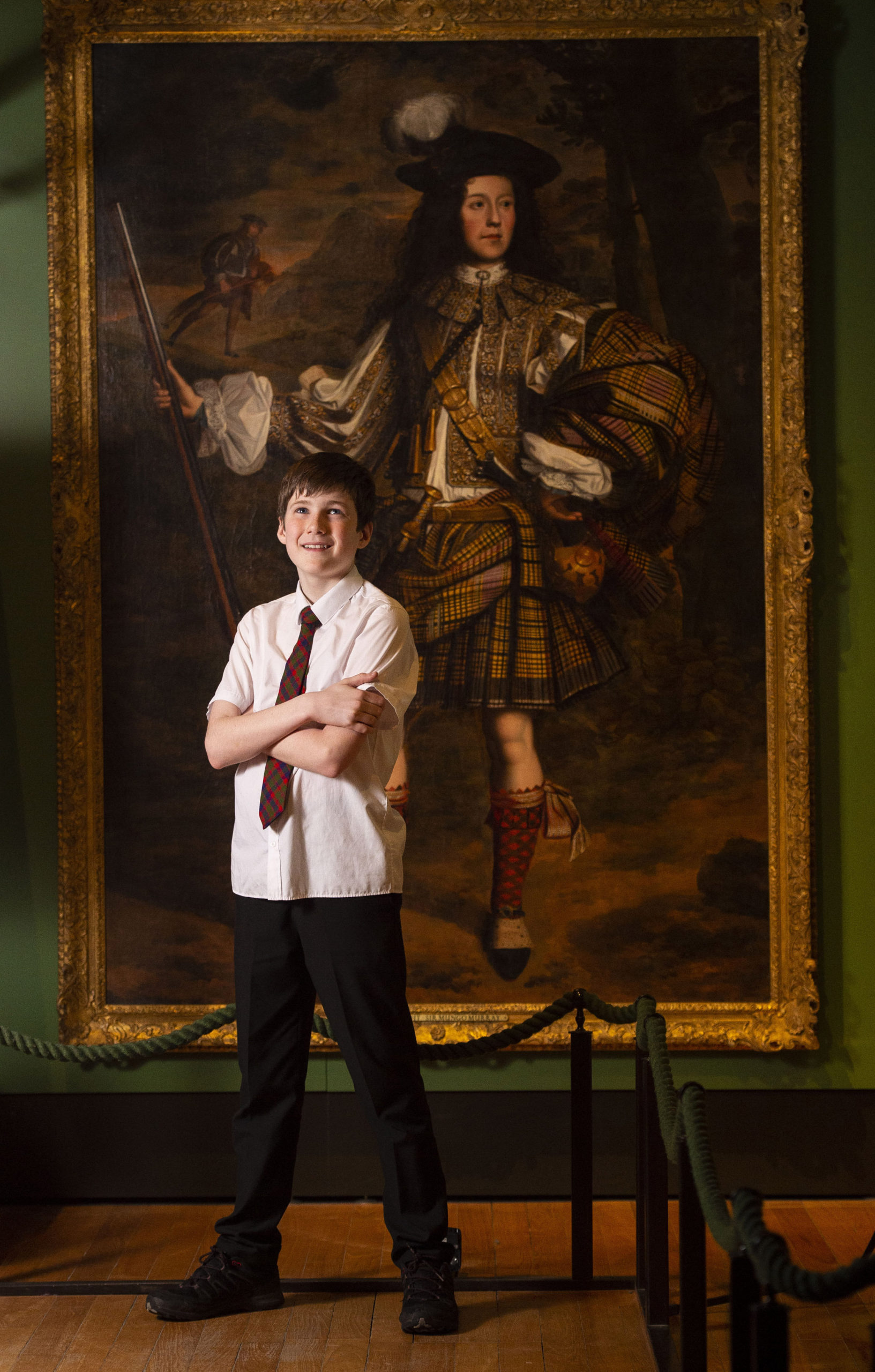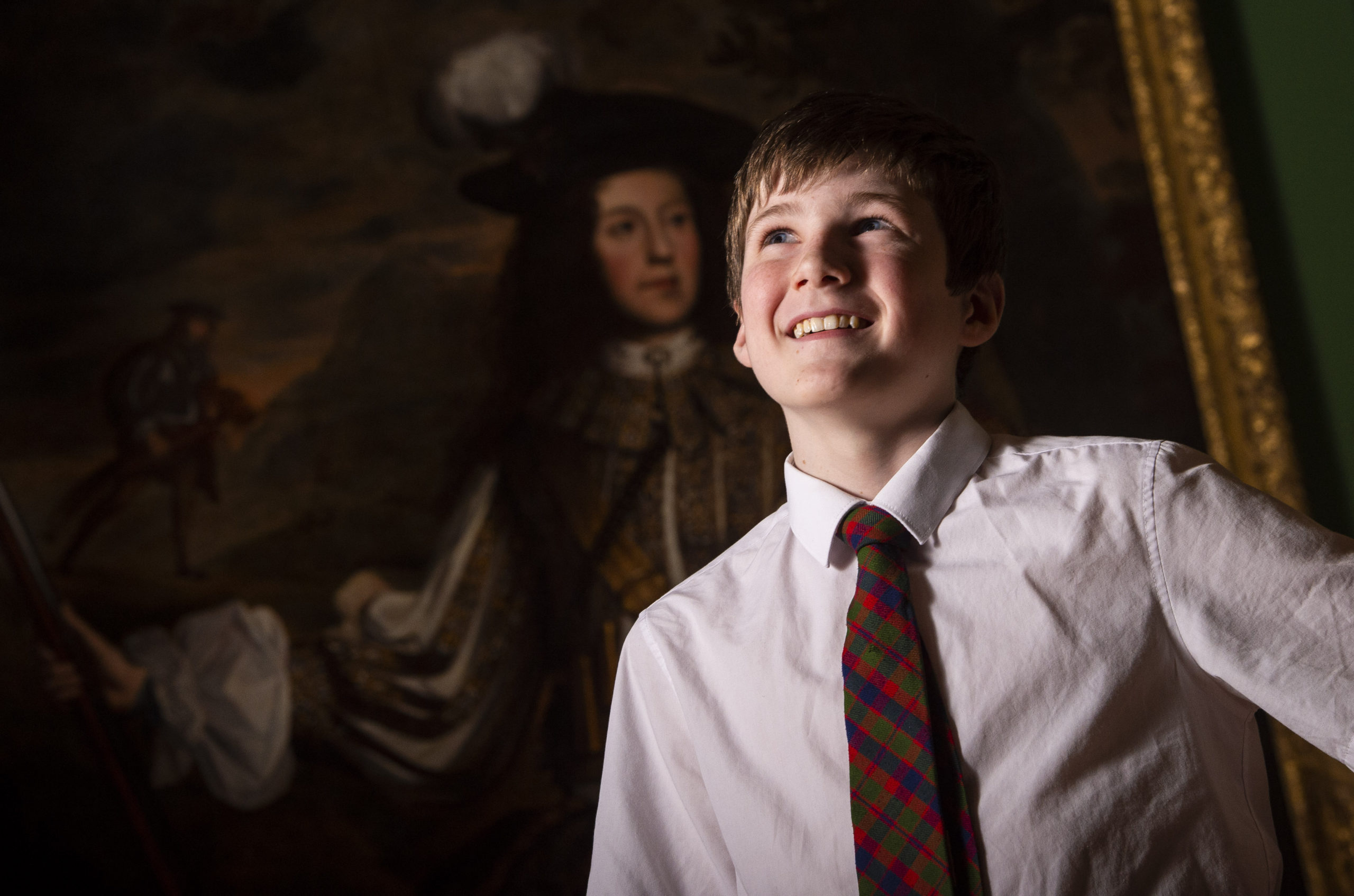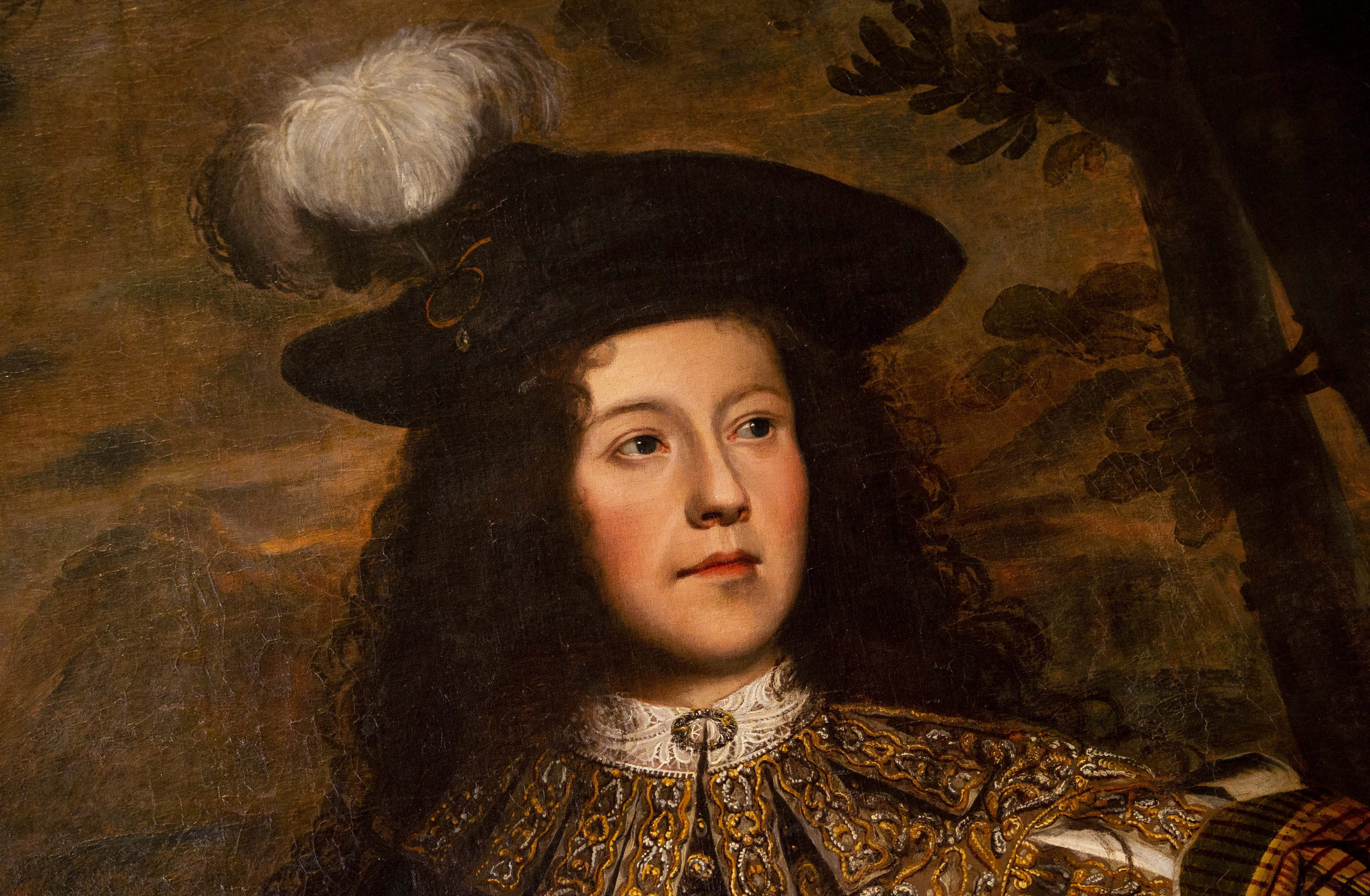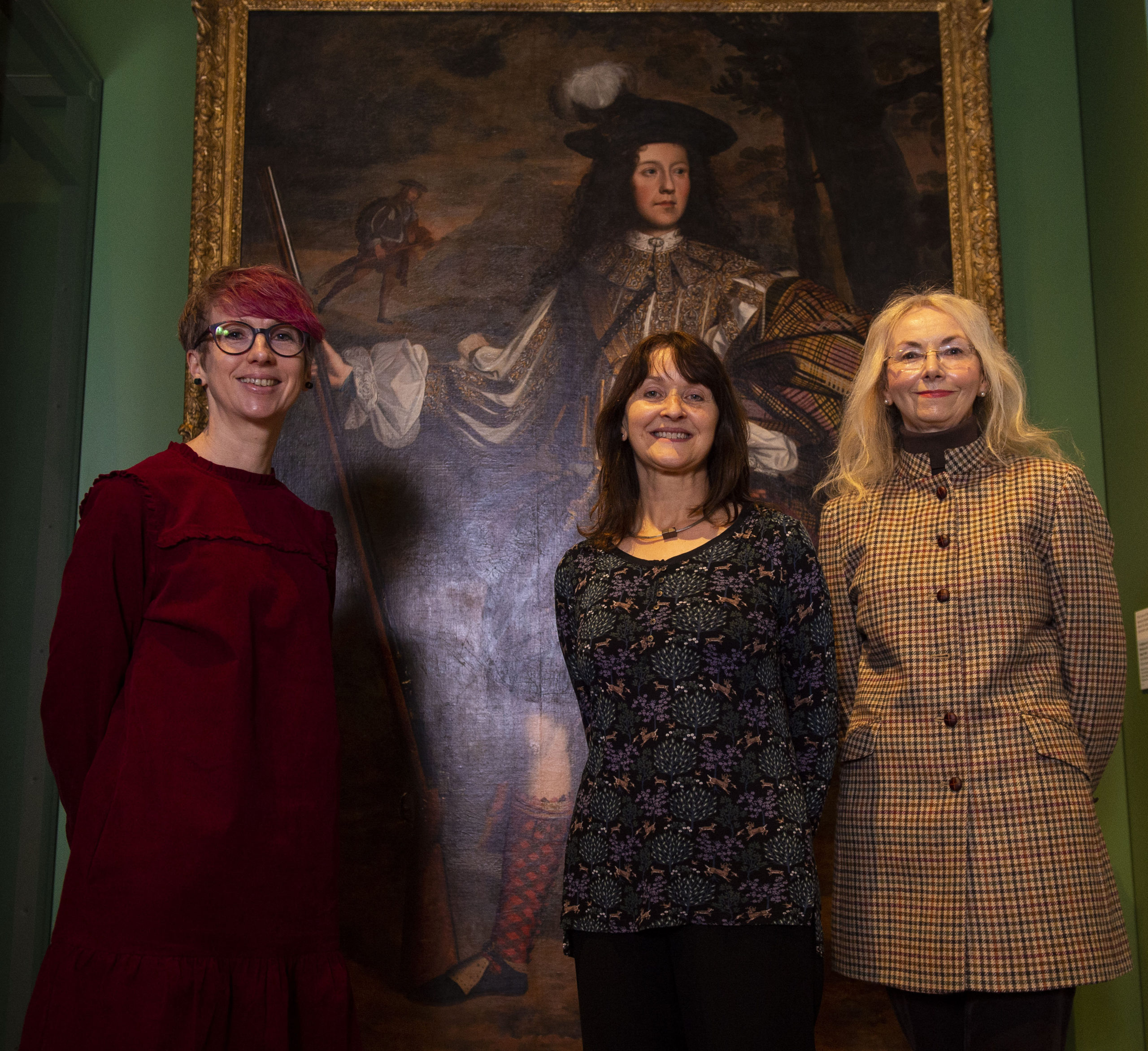An iconic portrait for the culture of Gaelic Scotland, currently on display at Kelvingrove Museum, has been purchased by Glasgow Museums.
A Highland Chieftain, a portrait of Lord Mungo Murray from around 1683, had been on loan to the museum but will now remain in the city attraction permanently.
The purchase was made with the support of the National Lottery Heritage Fund, Art Fund, Friends of Glasgow Museums and the National Fund for Acquisitions.
The painting features a 15-year-old Lord Mungo Murray, and is the earliest major portrait to depict a sitter full-length in Highland dress.
Murray wears an exquisite doublet and féileadh mór, or belted plaid, in tartan that pre-dates the invention of kilts and clan tartans.
Born in 1668, Murray would become part of the ill-fated Darién mission of 1699 in a bid to further his family’s political and economic position. He was killed in early 1700, aged 32, by Spanish forces who had already laid claim to the territory.
The painting has been displayed in the Scottish Identity in Art gallery at Kelvingrove Art Gallery and Museum, juxtaposed with interesting examples of Scottish weaponry, textiles and decorative art objects.
Painted in Ireland by London-born John Michael Wright, the portrait is notable for its elaborate detailing of costume, lively brushwork and delicate tonalities that tie together figure and background.
Chair of Glasgow Life and Depute Leader of Glasgow City Council, Councillor David McDonald, said: “We are indebted to The National Lottery Heritage Fund, Art Fund, Friends of Glasgow Museums and the National Fund for Acquisitions.
“Our successful acquisition of this hugely significant painting for Scottish culture and national identity ensures it remains accessible to the public who have come to love and identify with the work.
“Visitors can learn more about the painting and the artist through a programme of events and activities that will accompany its display in Kelvingrove.
“The portrait supports Glasgow Museums’ Scottish history, dress and textile and military collections, providing invaluable information for cultural historians interested in our national heritage, Gaelic culture and Highland identity.”
Glasgow Museums aim to advance their research into Gaelic culture and Scottish history.
Through family events such as educational workshops, talks and tours, handling sessions and craft opportunities focused on the painting, curators will explore a number of issues.
These include tartan myths, the meaning of Scottish identity in a multi-cultural, richly diverse society, gender stereotypes, toxic masculinity, teenage culture and transatlantic slavery.

Enjoy the convenience of having The Sunday Post delivered as a digital ePaper straight to your smartphone, tablet or computer.
Subscribe for only £5.49 a month and enjoy all the benefits of the printed paper as a digital replica.
Subscribe © Ross MacDonald / SNS Group
© Ross MacDonald / SNS Group © Ross MacDonald / SNS Group
© Ross MacDonald / SNS Group © Ross MacDonald / SNS Group
© Ross MacDonald / SNS Group © Ross MacDonald / SNS Group
© Ross MacDonald / SNS Group